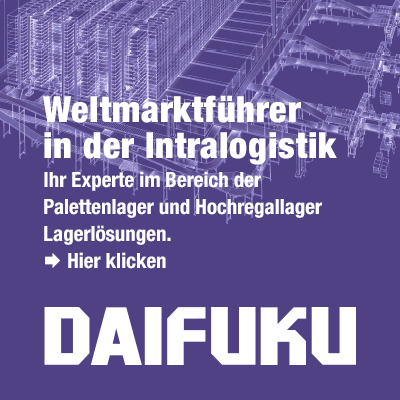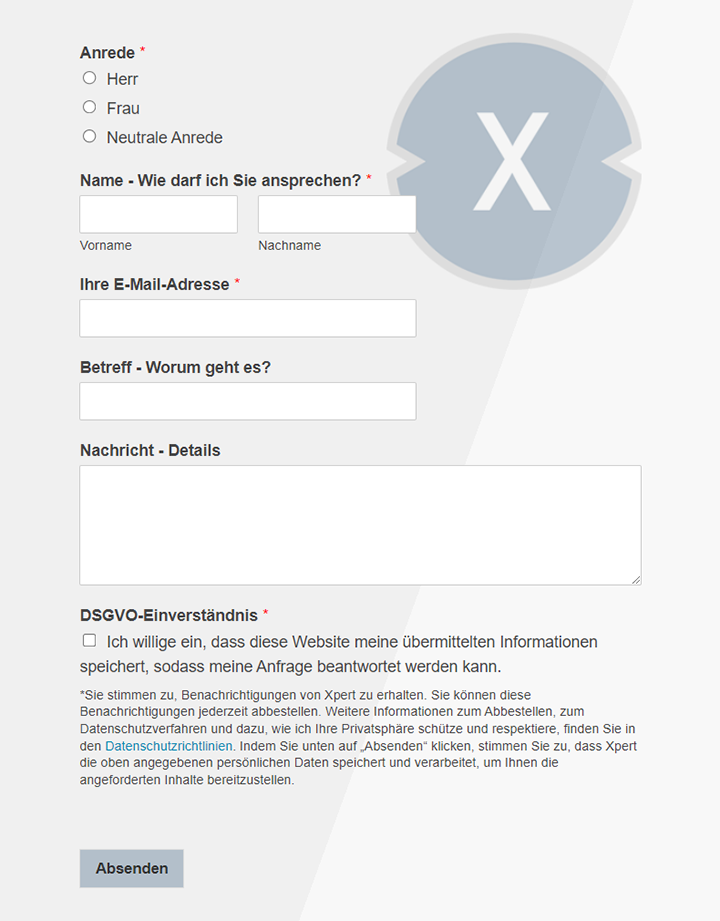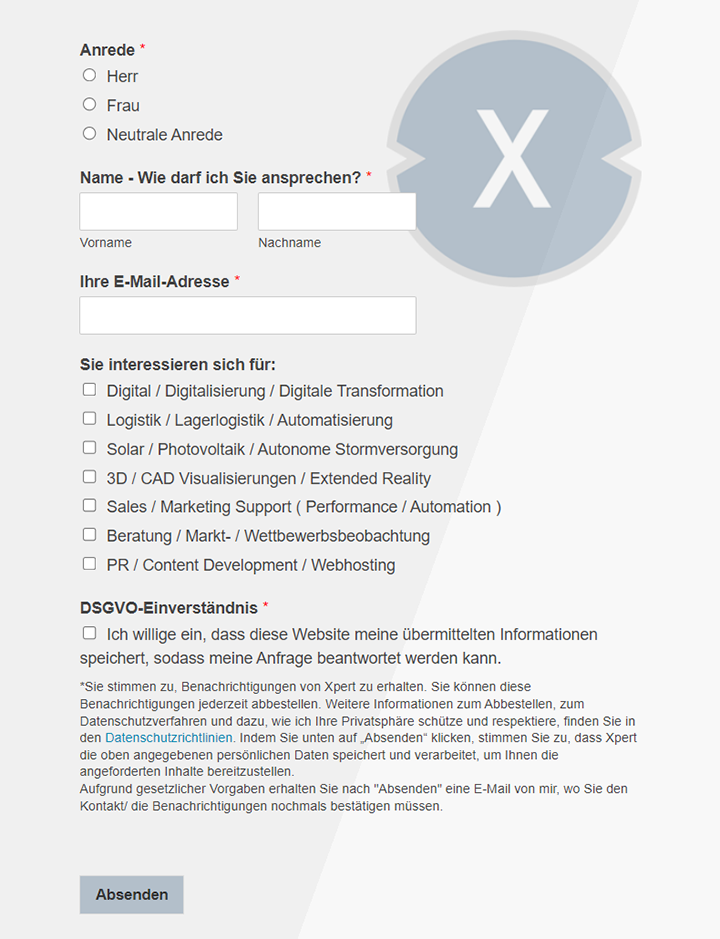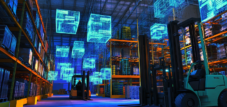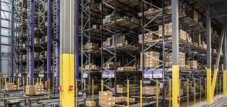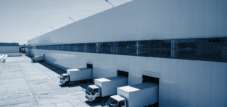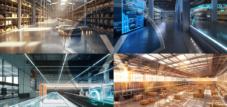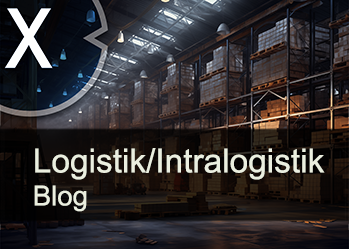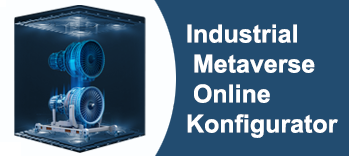44% of companies hesitate - retrofit in logistics: the hidden lever for massive cost savings
Xpert pre-release
Language selection 📢
Published on: February 14, 2025 / update from: 14th February 2025 - Author: Konrad Wolfenstein

44% of companies hesitate - retrofit in logistics: the hidden lever for massive cost savings - Image: Xpert.digital
Intelligent modernization: Why retrofit in logistics more than just cost costs
44% of companies hesitate: Do you miss the retrofit trend in logistics?
The modernization of existing logistics systems by retrofit represents an extremely attractive option for companies in order to bring their systems up to date and at the same time implement considerable cost savings. This approach is becoming increasingly important, especially in times of economic uncertainty in which investments have to be made. Retrofit measures not only offer the possibility of avoiding expensive new acquisitions, but also contribute to significantly increasing the performance and efficiency of the existing systems.
In essence, the retrofit is about upgrading outdated systems through targeted modernizations. This can include the exchange of control and electrical engineering, the optimization of the conveyor technology, the upgrading of shelf operating devices (RBG) and the implementation of modern digital technologies. "Companies that rely on retrofit invest in the future of their logistics processes without having to rebuild the entire company," emphasizes an industry expert. This procedure proves to be particularly cost -efficient, since the modernization of existing systems is usually significantly cheaper than the complete new construction of a system. Strategically planned investments can be saved, which often pay for themselves within a short time.
An important advantage of the retrofit measures lies in the increase in efficiency. The integration of modern technologies enables companies to control the material flow more precisely, reduce sources of error and increase productivity. For example, automated systems and advanced inventory management software can help optimize warehouse and distribution processes. "The digital transformation in logistics opens up new perspectives for error -free and powerful management," explains a specialist analyst. The networking of plant components also plays an important role here, because only through a smooth flow of information between the individual modules can processes be monitored and adapted in real time.
In addition to the increase in efficiency, Retrofit also has a significant sustainability aspect. The reuse and upgrade of existing structures not only reduce resource consumption, but also reduce CO2 emissions. This corresponds to the growing environmental awareness in industry and supports companies in achieving their ecological goals. "Sustainability is no longer a niche issue, but a strategic necessity," says an environmental manager of a logistics company. By modernizing their systems, they also make an important contribution to environmental protection.
Another significant advantage of the retrofit is the flexibility and adaptability of the modernized systems. In a dynamic business environment, in which requirements and market conditions are constantly changing, it is of crucial importance for companies to be able to quickly adapt their logistics processes to new circumstances. Retrofit enables existing systems to be modernized gradually without having to fully interrupt ongoing operation. This "Operation on the open heart" of logistics - a parallel to medicine in which vital systems continue during an intervention - minimizes the risks and downtimes.
Despite all these advantages, many companies are initially hesitant when investing in retrofit measures. Several factors contribute to this reluctance. An essential inhibitory is the general economic uncertainty that leads to cautious investment behavior in many industries. In times when the economy fluctuates and the financial markets are unstable, companies particularly carefully weigh the risks and opportunities of new investments. In addition, there are often high initial costs, which lead to savings in the long term, but lead to significant expenses in the initial phase. The development of tailor -made solutions for the specific requirements of a company can be cost -intensive and time -consuming.
Another critical aspect is the complexity and lack of standardization within the logistics industry. Different processes and requirements make it difficult to develop universally useless retrofit solutions. Companies often have to develop individually tailor-made concepts to modernize their systems, which significantly increases the planning and implementation effort. There are also internal challenges such as lack of staff and time pressure. Many companies report that due to limited personnel resources (49 percent) and lack of time (47 percent), they have difficulty initiating modernization projects. "The challenge is to master the balancing act between ongoing operation and the necessary modernization despite scarce resources," says a logistics manager.
In addition, many companies tend to be on a wait -and -see attitude. A study showed that about 44 percent of the respondents first want to observe how to use new technologies in other companies before investing themselves in retrofit. However, this hesitant attitude can lead to opportunities to be missed to increase efficiency and to improve competitiveness.
Despite these challenges, it shows that retrofit in logistics has enormous potential. Companies that have the courage to invest in the modernization of their existing systems can sustainably optimize their processes and position themselves strategically for future challenges. Measures in different areas prove particularly effectively:
Modernization of control technology
One of the central modernization measures concerns the renewal of control and electrical engineering. Outdated control systems are replaced by modern, digital controls that convince with their high performance. The integration of new interfaces and the update of warehouse management and operating software enable more precise process control. "The use of modern control technology can minimize sources of error and significantly accelerate operating processes," emphasizes a technology specialist.
Optimization of conveyor technology
In the area of conveyor technology, significant efficiency increases can be achieved if outdated drives are replaced by energy -efficient models. The integration of sensor technology ensures more precise control of the conveyor belts and enables the detection of bottlenecks in real time. Modern image detection systems that are integrated into the quality control process also help to secure product quality. Practical examples show that such measures can increase throughout the power by around 25 percent and system availability by over 20 percent.
Upgrading shelf operating devices (RBG)
There is also enormous savings and efficiency potential for the modernization of shelf operating devices. The upgrading of these systems leads to an increase in performance and reliability, which in turn reduces energy consumption. Improved spare parts available and optimized operating processes can lead to savings of up to 37 percent. "A more modern shelf operator not only works faster, but also more efficiently - this saves costs in the long term and increases competitiveness," explains an expert from the automation industry.
Integration of digital technologies
Digitization plays a central role in today's logistics. The use of tablets and scanners for the real time recording of inventory data is significantly increased the transparency in the warehouse processes. AI-supported analysis systems support decision-making by converting large amounts of data into valuable information. The networking of all system components enables central data use, which is essential for optimal control of the logistics processes. Modern digital technologies not only contribute to an increase in efficiency, but also open up new possibilities in the forecast and planning.
Adjustment of the warehouse layout
In addition to technical modernizations, a strategic reorganization of the warehouse layout can already lead to significant improvements. The entire material flow is improved by optimizing the picking places and reducing running paths. An intelligent division of the warehouse zones, which is based on changed product requirements, can help accelerate processes and avoid bottlenecks. "An optimized warehouse layout is the key to a smooth process - it is worth investing in improvements here," emphasizes a logistics consultant.
RetroFit projects are implemented in several phases, each of which brings their own challenges and time frames. Smaller retrofits can even be completed within one weekend. In the case of medium -sized projects that take several weeks to months, detailed planning and coordination is necessary in order not to disturb the operational processes. Extensive modernizations in large companies, on the other hand, can extend over half a year or more, especially if extensive systems are to be modernized.
The duration of a retrofit project is determined by various factors. The scope of the modernization measures plays a central role in this: depending on whether individual components or entire systems should be renewed, the time required significantly varies. The need to affect the current operation as little as possible often leads to a gradual implementation of the measures. Continuous operating management during the modernization phase, often referred to as "Operation on the open heart", extends the project, but at the same time minimizes the risks and downtimes.
A typical retrofit process is divided into several successive phases. First, there is a comprehensive analysis and planning that can take several weeks. In this phase, the existing systems are carefully examined and it is determined which measures are sensible and feasible. This is followed by the design phase, in which the future logistics system is designed and the necessary adjustments are determined. A detailed on-site inspection ensures that all relevant parameters are taken into account before it goes into the production and procurement phase. The actual implementation of the retrofit measures is finally carried out in an installation phase in which the modernized components are integrated into the existing system. Finally, the commissioning and comprehensive test phase follows, in which the functionality and efficiency of the modernized system are checked.
The strategic importance of retrofit measures is becoming increasingly clear, especially if you look at the long-term advantages. Companies that are willing to invest in the modernization of their logistics systems not only create short -term savings potential, but also ensure their competitiveness for the future. The continuous improvement of operational processes, reducing energy costs and adapting to new market requirements are enabled you to react flexibly and innovatively to changes. "A well -planned retrofit is not only an investment in technology, but also in the future viability of the company," summarizes an industry insider.
In addition to the purely technical aspects, business considerations also play an important role. The cost-benefit analysis of a retrofit project should always take into account long-term savings and the increase in productivity. The initial investments can appear high, but the long -term effects - from lower operating costs to higher system availability - usually predominate. Companies should therefore not only take a look at short -term costs, but above all the added value and the sustainability of the modernization measures.
Retrofit is a future -oriented approach in logistics that goes far beyond the pure cost saving. It is a strategic investment that laid the foundation for sustainable, efficient and flexible logistics. Due to the targeted modernization of existing systems, companies can not only strengthen their competitiveness, but also actively contribute to a more sustainable and resource -saving economy. Ultimately, it is the foresight and courage to actively shape the change that makes the difference - and retrofit offers an effective instrument.
Xpert partner in warehouse planning and construction
We are there for you - advice - planning - implementation - project management
☑️ SME support in strategy, consulting, planning and implementation
☑️ Creation or realignment of the digital strategy and digitalization
☑️ Expansion and optimization of international sales processes
☑️ Global & Digital B2B trading platforms
☑️ Pioneer Business Development
I would be happy to serve as your personal advisor.
You can contact me by filling out the contact form below or simply call me on +49 89 89 674 804 (Munich) .
I'm looking forward to our joint project.
Xpert.Digital - Konrad Wolfenstein
Xpert.Digital is a hub for industry with a focus on digitalization, mechanical engineering, logistics/intralogistics and photovoltaics.
With our 360° business development solution, we support well-known companies from new business to after sales.
Market intelligence, smarketing, marketing automation, content development, PR, mail campaigns, personalized social media and lead nurturing are part of our digital tools.
You can find out more at: www.xpert.digital - www.xpert.solar - www.xpert.plus



